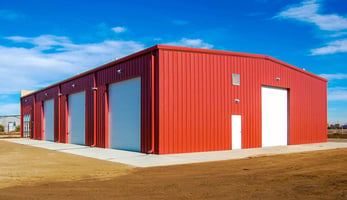When it comes to wireless communication, two terms you’ll often come across are UHF (Ultra High...
What is HALO? Understanding the Motorola HALO Sensor and Its Impact on Technology
In today’s rapidly advancing technological landscape, sensors are playing a critical role in a wide variety of applications, from healthcare to security and beyond. One such innovation is the HALO sensor by Motorola, a groundbreaking technology that promises to change the way we monitor and interact with our environments. In this blog, we’ll explore what the Motorola HALO sensor is, how it works, and the significant impact it has across different industries, including in schools, as the #1 vape detection device.
What is the Motorola HALO Sensor?
The HALO sensor by Motorola is an advanced sensor technology designed to provide detailed monitoring and real-time data analysis in various environments. Unlike traditional sensors, the Motorola HALO is capable of detecting a wide range of environmental factors with precision, such as temperature, humidity, air quality, and motion. It uses advanced wireless technologies to collect data from its surroundings, making it ideal for smart buildings, homes, offices, and industrial applications.
What sets the HALO sensor apart from other sensors on the market is its combination of versatility, accuracy, and seamless integration into existing networks. Whether you're looking to enhance security, improve energy efficiency, monitor vape detection, or monitor health metrics, the HALO sensor provides a robust solution.
Key Features of the Motorola HALO Sensor:
-
Advanced Data Collection: The HALO sensor can track a variety of environmental factors in real time, such as temperature fluctuations, air quality levels, motion detection, and even the presence of specific gases.
-
Wireless Connectivity: It is equipped with cutting-edge wireless technology, allowing it to integrate smoothly with other devices and systems for seamless communication and data exchange.
-
Cloud Integration: The data collected by HALO sensors can be transmitted to the cloud, enabling users to access the information remotely and analyze it from anywhere in the world.
-
Energy Efficiency: Designed to minimize power consumption, the HALO sensor is an energy-efficient solution that can run continuously without draining resources.
-
High Precision: HALO’s sensor technology provides highly accurate readings, ensuring the reliability of the data being collected.
How Does the Motorola HALO Sensor Work?
The HALO sensor operates through a combination of advanced sensors and wireless communication technologies. Here’s a simplified breakdown of how it works:
-
Data Collection: The sensor continuously monitors the environment for specific variables (temperature, humidity, motion, etc.) using high-precision sensors embedded in the device.
-
Wireless Transmission: Once the sensor gathers data, it transmits the information wirelessly to a cloud-based system or local server.
-
Real-Time Analysis: Using advanced algorithms and cloud-based analytics platforms, the HALO system processes the data in real time, allowing for immediate action or insights.
-
User Alerts: Based on predefined conditions, the HALO sensor can send notifications or alerts to users (such as building managers or security personnel) if certain thresholds are met (e.g., air quality dropping or motion detected in restricted areas).
This real-time monitoring and seamless communication ensure that businesses and individuals can take quick action when necessary, making the HALO sensor an essential tool for smart automation and safety.
Applications of the Motorola HALO Sensor
The Motorola HALO sensor’s flexibility makes it useful in various industries. Below are some of the most notable applications of this technology:
1. Smart Buildings
In smart buildings, the Motorola HALO sensor plays a key role in improving energy efficiency, security, and comfort. By monitoring temperature, humidity, air quality, and occupancy, the HALO sensor can automatically adjust systems such as heating, ventilation, air conditioning (HVAC), and lighting. This creates an optimized environment that is both energy-efficient and comfortable for inhabitants.
2. Healthcare Monitoring
HALO sensors are also making strides in the healthcare industry. They can be used to track patient conditions, monitor room conditions in hospitals, or even collect data for telemedicine applications. For example, HALO sensors can monitor the air quality in healthcare facilities, ensuring that proper conditions are maintained to reduce the risk of airborne diseases.
3. Industrial Monitoring and Automation
In industrial environments, the HALO sensor helps monitor machinery, track environmental conditions, and enhance workplace safety. By detecting changes in temperature, humidity, or motion, the sensor can alert staff to potential hazards, preventing equipment malfunctions or dangerous working conditions. The real-time monitoring capabilities can also be used to improve operational efficiency and reduce downtime.
4. Security and Surveillance
The HALO sensor is a critical tool in security systems. Its motion detection capabilities and environmental monitoring enhance security surveillance in sensitive areas, such as data centers, warehouses, and high-security zones. By integrating with security systems, HALO can help detect unauthorized entry, and environmental anomalies (e.g., fire or gas leaks), and even assist in post-incident analysis.
5. Air Quality Monitoring
Monitoring air quality is essential for public health. The HALO sensor can detect levels of various pollutants and toxins in the air, including vape detection, providing real-time data that helps authorities and individuals make informed decisions. Whether measuring air pollution in cities or ensuring proper air circulation in commercial spaces, the HALO sensor is an invaluable tool in environmental protection.
Why Choose the Motorola HALO Sensor?
The Motorola HALO sensor offers a wide range of benefits for industries and individuals alike:
-
Improved Efficiency: With real-time data and automation, the HALO sensor helps optimize operations, save energy, and enhance productivity.
-
Enhanced Safety: By detecting potential hazards and sending immediate alerts, it helps prevent accidents and protect valuable assets.
-
Scalability: The HALO sensor can easily scale to meet the needs of small businesses, large enterprises, or even smart cities.
-
Cost-Effective: With low energy consumption and minimal maintenance, the HALO sensor proves to be a cost-effective solution for continuous monitoring and data analysis.
Conclusion
The Motorola HALO sensor represents the cutting edge of environmental monitoring and sensor technology. With its ability to detect various environmental factors and seamlessly integrate into different systems, it offers numerous benefits across industries like healthcare, schools, security, smart buildings, and air quality monitoring. Whether you're looking to improve energy efficiency, enhance safety, or make smarter decisions based on real-time data, the HALO sensor offers a reliable and scalable solution.
As technology continues to evolve, sensors like HALO are paving the way for more efficient, secure, and sustainable environments, transforming the way we interact with the world around us.




